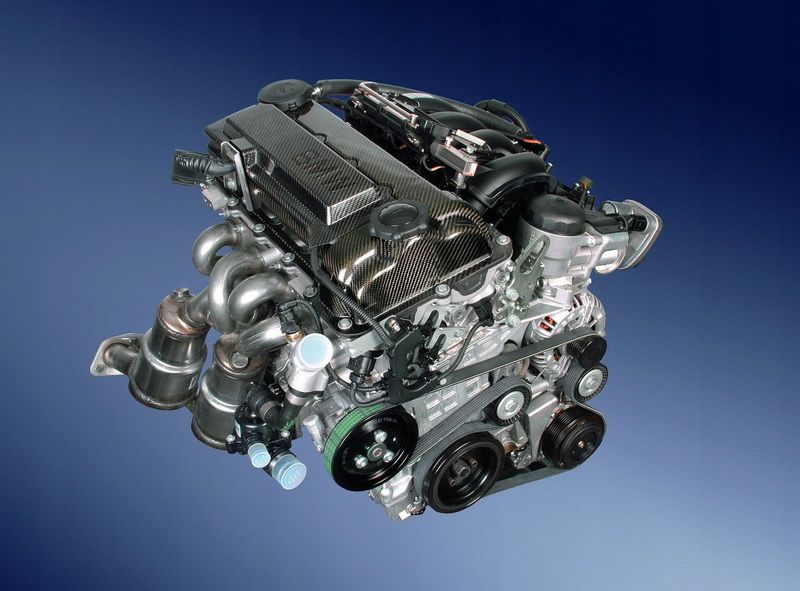
2.0 petrol engine - French and German models of the popular drive
Content
The motor is installed on sedans, coupes and station wagons. The Audi A4 Avant and Peugeot 307 are among the models with the 2.0 engine. Gasoline is burned in moderation, which affects the popularity of cars of both German and French concerns. We present the most important information about this unit.
VW Group has created a good 2.0 petrol engine with TSI technology
The 2.0 TSI/TFSI engine certainly gets a lot of praise for its amazing performance and fuel economy. The engine is installed on car models such as Volkswagen, Audi, Seat and Skoda, i.e. for all vehicles belonging to the Volkswagen Group.
Separately, it should be said about the technology developed by the German company. A key aspect in the operation of 2.0 TSI units is the direct fuel injection system, which has been developed since the 90s. Thanks to these and other design solutions, the 2.0 TSI petrol engine from the Volkswagen Group is characterized by good economy and optimal performance.
The first generation of the 2.0 TSI engine is a gasoline engine of the EA888 family.
There are many types of engines in the Volkswagen engine range. The first 2.0 TSI unit was an EA113 marked unit released in 2004. It was developed from the naturally aspirated version with direct fuel injection, i.e. the VW 2.0 FSI. The difference was that the newer version was turbocharged.
The 2.0 engine also had a cast iron cylinder block with a modified counterbalance mechanism with two counterbalance shafts with a crankshaft. The pistons have been modified for lower compression on heavy duty connecting rods. The unit had four cylinders, piston stroke 92.8, cylinder diameter 82.5. It has been used for example. in vehicles such as the Audi A3, A4, A6, TT and Seat Exeo, Skoda Octavia, Volkswagen Golf, Passat, Polo, Tiguan and Jetta.
Third generation 2.0 TSI engine
The third generation engine from Volkswagen has been produced since 2011. The cast-iron block was retained, but it was decided to make the cylinder walls thinner by 0,5 mm. The changes also affected the pistons and rings. An integrated water-cooled exhaust manifold was used. The designers also settled on two nozzles per cylinder, and added a Garrett turbocharger to more powerful engines.
Further changes were made in subsequent years. The 2.0 engine uses intake valves with a closing delay - due to this, gasoline is burned in less quantity. He also opted for a new intake manifold and a smaller turbocharger.
The 2.0 engine is a petrol version from PSA. XU and EW family motors
One of the first gasoline units from PSA was a 2.0-liter engine with 121 hp. It was used in Citroen and Peugeot cars. The engine of the 80s design was installed in cars such as the Citroen Xanta, Peugeot 065, 306 and 806. It was a four-cylinder eight-valve unit with multipoint injection. It worked well with the LPG setup.
The XU family units were also extremely popular. They were used not only in Peugeot and Citroen cars, but also in Lancia and Fiat models. The PSA 2.0 16V engine produced 136 hp. It was built in the 90s, was durable and economical. He was a good choice when it came to installing an LPG system.
The four-cylinder, sixteen-valve, multipoint fuel-injected engine was installed in cars such as the Citroen C5, C8, Peugeot 206, 307 and 406, as well as Fiat Ulysse and Lancia Zeta and Phedra.
Is the reputation of the units deserved?
Definitely yes. Both models produced by Volkswagen and the PSA concern have forever entered the reviews of drivers as trouble-free and reliable in operation. With regular maintenance and oil changes, malfunctions and failures were extremely rare. For this reason, many models have impressive mileage. The advantage of gasoline fans from Germany and France was that they worked perfectly with liquefied gas installations.
The units currently produced are more complex in design. This is due to the fact that they must meet stringent European emission standards. This is one of the reasons why the engines are more prone to failure and far from the reliability of the previous models of popular gasoline engines found in Renault, Citroen or Volkswagen Group vehicles.